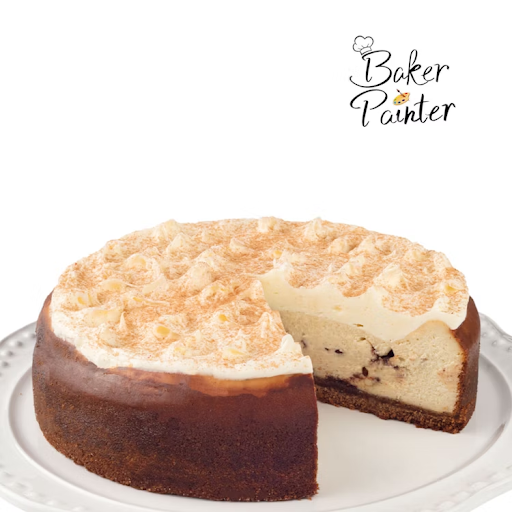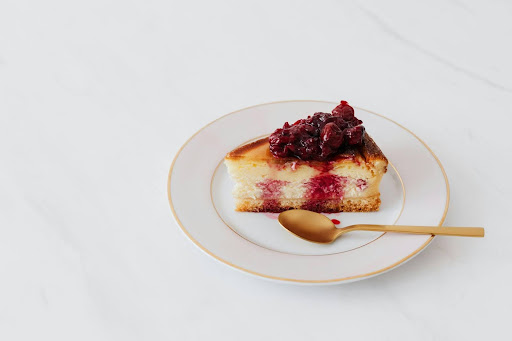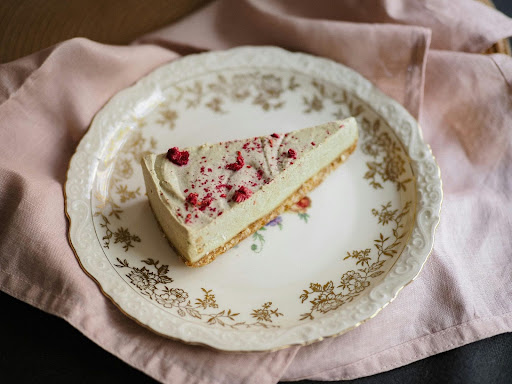Can You Freeze Cheesecake?

Cheesecake is a delightful treat loved by many, but what if you find yourself with leftovers or want to prepare ahead of time? The question often arises: can you freeze cheesecake? The short answer is yes, you can! However, there are certain best practices to follow to ensure that your cheesecake maintains its flavor, texture, and overall deliciousness. Let's delve into the details of how to properly freeze this indulgent dessert.
When freezing cheesecake, it's essential to take the proper steps to preserve its taste and texture. By following these best practices, you can enjoy your favorite dessert even when stored in the freezer.
Why Freeze Cheesecake?
Before delving into the intricacies of icing a cheesecake, it's essential to understand why you might want to solidify it in the first place. Storing cheesecake in the freezer allows you to extend its shelf life, making it possible to enjoy this decadent dessert over an extended period in various forms. Whether you've baked too many slices of cheesecake for an event, have a whole cheesecake remaining, or simply want to plan ahead for future cravings, freezing cheesecake is a convenient solution. Additionally, storing it in the freezer with its toppings intact ensures that every delicious component is preserved for later enjoyment.
Best Way to Freeze Cheesecake
Freezing cheesecake requires careful attention to detail to preserve its flavor and texture. Follow these best practices for optimal results:
Chill the Whole Cheesecake or Slice
Before freezing your cheesecake, ensure that it's thoroughly chilled. Cooling the dessert in the refrigerator for at least four hours or overnight will help it set properly and prevent any potential texture issues during freezing. This step is crucial to ensure that the cheesecake retains its creamy consistency and doesn't become overly firm or icy after freezing. It'll also help ensure that the cheesecake won't get excessively firm or icy. If you'd like to keep leftover slices, cooling the cheesecake properly before freezing is essential to maintain its quality. Remember, it's best to fridge overnight before freezing for optimal results.
Wrap Properly before Placing in Freezer
Proper wrapping is crucial to prevent freezer burn and preserve the cheesecake's taste. Start by placing the cheesecake on a sturdy, flat surface. Then, wrap the cheesecake tightly with two layers of plastic wrap, ensuring that no part of the cheesecake is exposed to the air. Next, wrap the cheesecake in a layer of aluminum foil for an extra layer of protection. This double wrapping method creates a barrier against air and moisture, preventing the cheesecake from absorbing unwanted odors and flavors from the freezer. Remember to let the cheesecake sit at room temperature for a few minutes before wrapping it to avoid condensation inside the wrapping. Additionally, if your cheesecake is still in a springform pan, remove it from the pan before wrapping. This will help maintain the shape of the entire cheesecake during freezing and make it easier to wrap securely. For best results, refrigerate the wrapped cheesecake overnight before transferring it to the freezer. This ensures that the cheesecake is properly chilled before freezing, preserving its texture and flavor. It's important to note that cheesecake is one delicate dessert that requires careful handling to maintain its quality during freezing. Lastly, ensure that the wrapped cheesecake is consumed within a reasonable time frame to enjoy it at its best.
Choose the Right Container
When freezing cheesecake, choose suitable containers to prevent compression and freezer burn. Employ airtight containers or freezer bags designed for food preservation, ensuring they're spacious enough. Consider toppings and decorations; wrap them securely along with the cheesecake to maintain freshness. Leave space for post-thawing decorations, keeping the dessert visually appealing. Additionally, try making variations beforehand, like baked or no-bake cheesecakes or fruit, to enhance the frozen cheesecake's appeal. Remember to let the cheesecake cool before freezing to preserve its texture and flavor. Also, keep in mind that cheesecake can typically be stored in the freezer for up to 1 month, so plan accordingly.
Freeze Quickly
Once the cheesecake is wrapped and properly sealed, place it in an icebox promptly. Freezing the cheesecake quickly helps maintain its freshness and prevents the formation of ice crystals, which can compromise the texture. Ensure that the freezer temperature is set to 0°F (-18°C) or below to freeze the cheesecake efficiently. Avoid placing the cheesecake near the freezer door or in areas where it may be exposed to temperature fluctuations, as this can affect the quality of the chilled dessert. Remember to let it cool and put the cheesecake in a suitable location within the freezer to maintain its optimal condition. It's best if eaten within the recommended timeframe for the freshest taste. Freezing the cheesecake promptly also makes it less likely to separate upon thawing. This applies to all types of cheesecakes, including those made with full-fat ingredients.
Label and Date
To avoid confusion and ensure you know when the cheesecake was frozen, label the container with the date of freezing. Additionally, write down any specific instructions for defrosting or serving the cheesecake if necessary. Use a permanent marker or freezer-safe labels to clearly mark the container with the date and any additional information. This step is essential for keeping track of the cheesecake's storage time and ensuring that it's consumed within the recommended timeframe for the best quality and taste. Remember to note the months in the freezer to keep track of how long it has been stored. When it's time to thaw the cheesecake, don't forget to remove the foil to allow for proper defrosting. This applies to both homemade and store-bought baked cheesecakes. Make sure to let the cheesecake thaw completely before serving to enjoy its creamy texture and delicious flavor fully. If you're a fan of Nigella Lawson's recipes, you might consider trying out her cheesecake variations for a unique twist on this classic dessert.
Thawing and Serving Frozen Cheesecake
When it comes time to enjoy your cheesecake, proper defrosting is essential to preserve its taste and texture. Follow these steps for thawing and serving:
Transfer to Refrigerator
The optimal method for defrosting cheesecake involves moving it from the freezer to the refrigerator. Position the well-wrapped cheesecake in the refrigerator and permit it to thaw gradually overnight or for a minimum of 6-8 hours for best outcomes. This gradual defrosting technique guarantees that the cheesecake defrosts uniformly, safeguarding its creamy texture and warding off any possible textural anomalies. By allowing the cheesecake to thaw in the refrigerator, you're also reducing the likelihood of bacterial proliferation, ensuring the safety of your dessert.
Serve Chilled

Once the cheesecake is fully thawed, remove it from the refrigerator and unwrap it carefully. Allow the cheesecake to come to room temperature for about 30 minutes before serving. Cheesecake is best enjoyed chilled, so serving it directly from the refrigerator maintains its creamy consistency and enhances its flavor. Whether you're enjoying a classic New York-style cheesecake or a decadent chocolate variation, serving it chilled enhances the overall taste experience. Plus, the contrast between the cold cheesecake and any accompanying toppings or sauces adds to the sensory delight of each bite.
Garnish and Serve
Before serving your thawed cheesecake, consider garnishing it with your favorite toppings to elevate its presentation and flavor. Fresh berries, whipped cream, chocolate shavings, or a drizzle of caramel or fruit sauce are popular choices that complement the rich and creamy texture of cheesecake. Get creative with your garnishes to add visual appeal and extra indulgence to your dessert. Additionally, allow the leftover cheesecake to cool before serving to ensure the toppings adhere properly and to enhance the overall dining experience. Before freezing the cheesecake, remember to wrap it tightly with a layer of foil to protect it from freezer burn and preserve its freshness. Place the wrapped cheesecake on a cardboard round before slicing the cheesecake into portions and putting them into the freezer. It's essential to keep the frozen cheesecake within a reasonable timeframe for optimal taste and texture. You can also refer to a cookbook for additional garnishing ideas and inspiration.
Additional Tips
- If you're freezing individual slices of cheesecake, thaw only the portions you plan to serve to avoid refreezing leftovers.
- To slice the cheesecake neatly, use a sharp knife dipped in hot water and wiped dry between cuts.
- Leftover thawed cheesecake can be stored in the refrigerator for an additional 2-3 days, but it's best to consume it as soon as possible for optimal taste and texture.
- For homemade cheesecake recipes, ensure that the cheesecake is fully cooled before freezing to prevent condensation and maintain its integrity during storage.
Conclusion

In conclusion, freezing cheesecake is a convenient way to extend its shelf life and enjoy this delectable dessert at your leisure. By following the best practices outlined above, you can ensure that your chilled cheesecake retains its flavor, texture, and overall deliciousness. So, the next time you find yourself asking, "Can you freeze cheesecake?" remember that with proper preparation and storage, you can indulge in creamy cheesecake goodness whenever the craving strikes. For those without time to bake, Sweet Tooth Marketplace offers gourmet cheesecake delivery, making indulgence easy and convenient.
